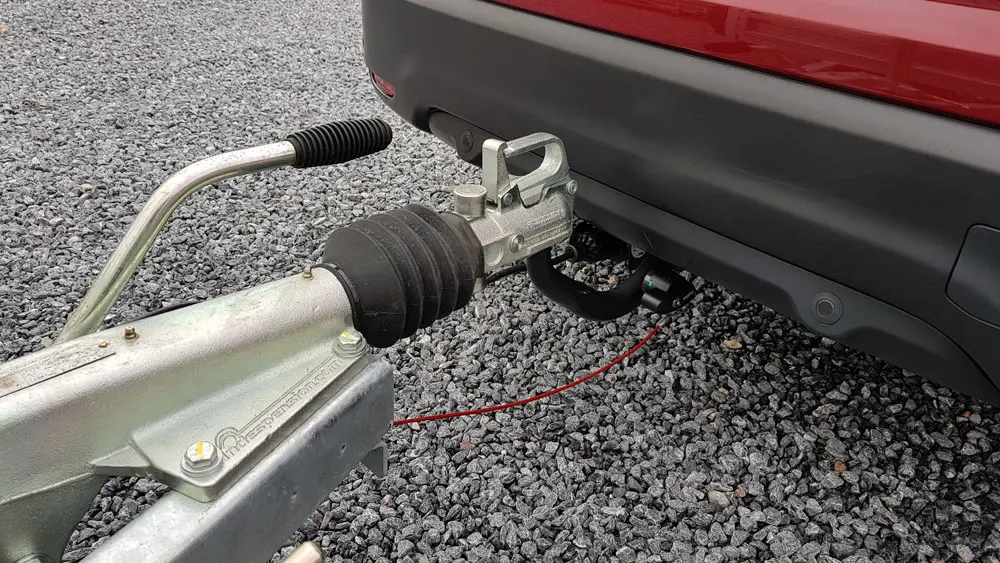Towbar regulations in the UK encompass a range of legal requirements designed to ensure safe towing practices on British roads. As reported by GOV.UK, these regulations cover various aspects including towbar type approval, weight limits, and essential safety equipment for towing vehicles and trailers.
Type Approval for Towbars
Type approval for towbars became mandatory in the UK on August 1, 1998, for all passenger vehicles up to 3500kg Gross Vehicle Weight (M1 vehicles). This regulation, initially known as EC 94/20 and later replaced by Regulation 55, requires towbars to:
- Mount to the vehicle frame according to manufacturer specifications.
- Undergo a rigorous 2 million cycle fatigue test.
- Receive inspection and certification from the Vehicle Certification Agency (VCA).
- Display a unique type approval number on a visible label.
For vehicles registered after this date, only type-approved towbars can be legally used for towing. This requirement ensures towbar safety and compatibility across European markets, harmonizing standards and contributing to road safety.
Towing Speed Limits
When towing a caravan or trailer in the UK, specific speed limits apply:
- Motorways and dual carriageways: 60 mph (96 km/h) maximum.
- Single carriageways: 50 mph (80 km/h) maximum.
- Built-up areas: 30 mph (48 km/h) or the posted limit if lower.
These limits are lower than those for cars without trailers to ensure stability and safety while towing. On motorways with three or more lanes, vehicles towing trailers are not permitted in the outside lane. It’s crucial to adhere to these limits and adjust speed according to road conditions, as towing affects vehicle handling and stopping distances.
Towbar Design and Safety
Towbar design and safety are critical aspects of UK towing regulations, ensuring that towing equipment meets stringent standards for road use. Type-approved towbars must be designed to fit the vehicle manufacturer’s official mounting points and undergo rigorous testing.
Key Safety Features
- A secondary coupling or breakaway cable to prevent trailer detachment.
- Proper positioning of the towball in relation to mounting points.
- Compliance with electromagnetic compatibility standards for towing electrics.
For vehicles first used before August 1, 1998, towbars do not require type approval, but must still be safe and suitable for the vehicle. Regardless of the vehicle’s age, all towing equipment must be maintained in good working order to avoid fines, driving bans, or penalty points for using a vehicle in a dangerous condition.
Towbar Care and Protection
Regular maintenance is crucial for ensuring the safety and longevity of towbars. Key maintenance tasks include:
- Cleaning the towball and hitch with brake cleaner or white spirit to remove grease and grit that can cause abrasion.
- Inspecting all components for signs of corrosion, damage, or looseness.
- Checking the torque of mounting bolts after the first 500 miles of towing.
- Lubricating moving parts on detachable towbars, but avoiding grease on the towball itself.
For protection when not in use, towbar covers are recommended, especially for retractable towbars prone to corrosion. Covers prevent debris accumulation and protect the towball from environmental damage. On detachable towbars, the socket should be sealed with a plug when the ball is removed. Proper maintenance and protection help ensure the towbar remains safe and functional for towing.
European Type Approval Standards
European Type Approval Standards for towbars are designed to ensure safety and consistency across the European Union. The primary regulation governing towbar standards is EC 94/20, which was later replaced by Regulation 55. These standards apply to all passenger vehicles up to 3500kg Gross Vehicle Weight (M1 vehicles) and light commercial vehicles.
Key Aspects of European Type Approval Standards
- Towbar Design: The towbar must mount to the vehicle frame in accordance with the vehicle manufacturer’s specifications.
- Testing Requirements: Each towbar design undergoes a rigorous 2 million cycle fatigue test, typically lasting 60 hours. This simulates real-world stress and ensures long-term durability.
- D-Value: This calculated value represents the theoretical horizontal force between the towing vehicle and trailer. The maximum D-value for an M1 vehicle is 17.7kN, representing a Gross Vehicle Weight of 3500kg towing a Gross Trailer Weight of 3500kg.
- S-Value: This indicates the maximum vertical load (noseweight) that can be applied to the towball. It’s crucial for maintaining vehicle stability while towing.
- Approval Labeling: Type-approved towbars must display a label with the product code, D-value, S-value, and a European approval number in the format e11 00-012345. This label must remain visible after installation.
- Secondary Coupling: Regulation 55 introduced additional requirements, including a static force test for the secondary coupling (breakaway cable attachment point).
- Electromagnetic Compatibility: Towing electrics must comply with directive 2009/19/EC to prevent interference with vehicle electronics.
These standards ensure that towbars sold and fitted in the EU meet consistent safety and performance criteria, facilitating cross-border travel and promoting road safety. It’s important to note that while EC 94/20 towbars are still approved for use, newer designs must meet the additional requirements of Regulation 55.
Vehicle Compatibility Requirements
When considering towbar installation, vehicle compatibility is a crucial factor that determines whether a towbar can be safely and legally fitted. Not all vehicles are designed to accommodate towbars, and several key requirements must be met:
- Manufacturer Specifications: Vehicle manufacturers provide specific guidelines for towbar compatibility. These specifications include designated mounting points, maximum towing capacity, and recommended towbar types. It’s essential to consult the vehicle’s handbook or contact the manufacturer directly for this information.
- Chassis Design: The vehicle’s chassis must be capable of supporting the additional stress imposed by towing. Some vehicles have reinforced chassis designs specifically for this purpose, while others may require modifications to safely accommodate a towbar.
- Towing Capacity: Each vehicle has a maximum towing capacity, which is the heaviest weight it can safely tow. This figure is determined by factors such as engine power, transmission type, and braking system capacity. Exceeding this limit is both dangerous and illegal.
- Gross Train Weight (GTW): This is the combined maximum permissible weight of the fully-loaded vehicle and trailer. The GTW must not be exceeded and is typically listed in the vehicle’s documentation or on the VIN plate.
- Noseweight Capacity: This refers to the maximum downward force that can be exerted on the towball. Vehicles have specific noseweight limits, which must be considered when selecting a trailer or caravan.
- Electrical Systems: Modern vehicles often require complex electrical interfaces to integrate towbar wiring with the vehicle’s systems. Compatibility with the vehicle’s electrical architecture is essential for proper functioning of trailer lights and safety features.
- Vehicle Age and Type Approval: For vehicles registered after August 1, 1998, only type-approved towbars can be fitted. Older vehicles have more flexibility but must still meet safety standards.
Some vehicles, particularly sports cars or those with specific design features, may not be suitable for towbar installation at all. Always consult with a professional towbar fitter or the vehicle manufacturer to ensure compatibility before proceeding with installation.
Summary
UK towbar laws are designed to ensure safe and compliant towing practices through regulations for type approval, towing speed limits, and equipment maintenance. Towbars must meet European standards for safety and performance, while regular care and inspection ensure their longevity. Following these laws and guidelines helps ensure safe towing for all road users.



